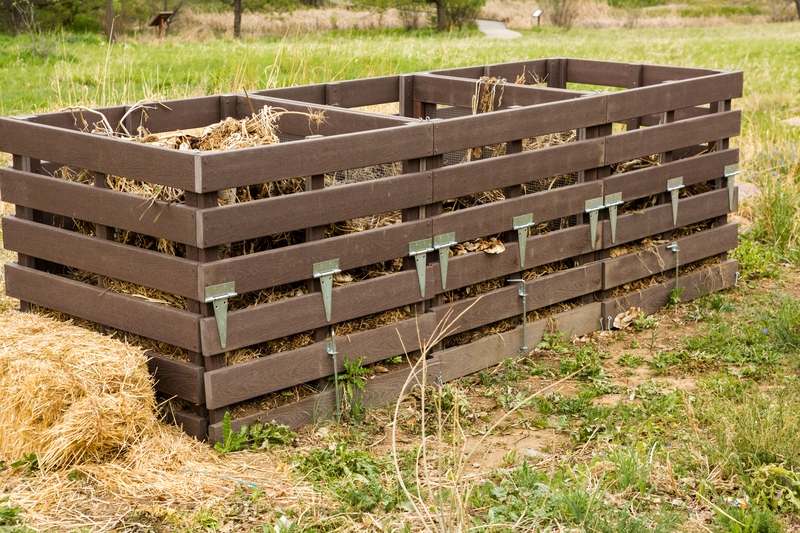Protecting the Planet When You Dispose of Your PPE: A Definitive Guide
The global usage of Personal Protective Equipment (PPE) soared during recent health crises, and although PPE safeguards our well-being, its improper disposal poses grave risks to the environment. Protecting the planet when you dispose of your PPE is not just courteous--it's essential. This comprehensive guide explores eco-friendly disposal of PPE, detailing methods, impacts, and how you can play your part in safeguarding both health and habitat.

Why Is Proper PPE Disposal Critical?
The spike in PPE consumption--like masks, gloves, and face shields--has led to a surge in plastic pollution and hazardous littering. Most PPE items are made from single-use plastics, such as polypropylene, which can take hundreds of years to decompose.
- Marine pollution: Discarded PPE often ends up in oceans, endangering marine life.
- Microplastics: As PPE breaks down, it produces microplastics that enter food chains.
- Public health risks: Littered PPE can spread pathogens and harm both people and wildlife.
_Understanding the environmental repercussions is the first step toward responsible PPE disposal and environmental stewardship._
Understanding Various Types of PPE and Their Environmental Impact
Before disposing of your PPE responsibly, it's essential to differentiate among its types:
- Face Masks: Surgical, N95, cloth, and reusable masks each have unique disposal protocols.
- Gloves: Usually made of latex, nitrile, or vinyl--each with different environmental footprints.
- Face Shields and Goggles: Primarily plastic-based and less frequently replaced but just as crucial to manage responsibly.
- Protective Gowns & Aprons: Often made from synthetic polymers and require special attention.
_Recognizing the differences can guide you toward the most planet-friendly practices_ when disposing of personal protective equipment.
Challenges in Disposing of PPE Responsibly
- Non-recyclable materials: Most single-use PPE contains mixed plastics that are difficult to recycle.
- Contamination risks: Used PPE may harbor pathogens, making manual sorting a health hazard.
- Lack of awareness and infrastructure: Many communities lack access to dedicated PPE waste bins.
While these challenges complicate planet-friendly PPE disposal, there are practical strategies you can embrace.
Best Practices for Disposing of Your PPE While Protecting the Environment
1. Do Not Litter--Use Appropriate Waste Bins
- Dispose of used masks, gloves, and single-use PPE in a closed-lid trash bin--not in recyclables unless specifically instructed.
- If out in public, carry a sealable bag to hold used items until you can dispose of them safely.
2. Never Flush PPE Down the Toilet
- Flushing masks or gloves leads to clogged sewage systems and pollution of waterways.
- Always dispose of PPE in landfill-bound waste bins unless a specialist collection service is available.
3. Leverage Community Collection and Disposal Programs
- Check if your municipality offers dedicated PPE disposal sites or collection days for hazardous materials.
- Some retailers provide PPE recycling drop-off points--maximize these resources.
4. Decontaminate Before Disposal (When Possible)
- If you're disposing of non-contaminated PPE, consider placing it in a separate sealed bag for safety.
- For reusable cloth masks, wash and reuse until they are worn out, then repurpose as rags or recycle as textiles if permitted.
5. Reduce, Reuse, and Recycle
- Opt for reusable PPE where appropriate--like washable cloth masks or goggles.
- When PPE is no longer usable, investigate specialized recycling schemes, e.g., TerraCycle programs for PPE.
_Implementing these steps makes protecting the planet when you dispose of your PPE a tangible reality._
Innovation in Eco-Friendly PPE Solutions
The world of PPE is evolving, and so are environmental solutions. Here are some emerging innovations:
- Biodegradable Masks and Gloves: Made from natural fibers or plant-based plastics, these alternatives break down in months, not centuries.
- PPE Take-Back Initiatives: Some companies collect and recycle used PPE into construction materials or energy.
- Smart Bins: These bins automatically seal and sort contaminated PPE for safer handling and processing.
By supporting and demanding such eco-friendly PPE technologies, individuals and organizations can create systemic change in medical waste management.
The Dangers of Improper PPE Disposal
Oceanic Impact
Marine animals can mistake floating masks and gloves for food, leading to injury, suffocation, and death. Microplastic pollution from PPE can compromise entire aquatic ecosystems.
Wildlife Hazards
Birds, rodents, and even pets are at risk from discarded straps and synthetic fibers--often becoming entangled or ingesting toxic components.
Human Health Risks
Improperly disposed PPE may spread diseases, especially in densely populated areas with inadequate waste disposal.
_Protecting the planet when you dispose of your PPE is a direct way to defend both environmental and public health._
How to Encourage Others to Dispose of PPE Responsibly
Effective environmental action requires community involvement. Here's how you can lead by example:
- Share educational resources on proper PPE disposal on social media and in community groups.
- Advocate for more disposal bins in public areas and workplaces.
- Support policy initiatives aimed at reducing single-use plastics in healthcare and encouraging sustainable alternatives.
- Organize cleanup events to remove PPE litter from parks, waterways, and neighborhoods.
_The more people know about eco-friendly PPE disposal, the bigger the positive impact on the planet._
Frequently Asked Questions About PPE Disposal
Can single-use masks be recycled?
Most standard disposal masks, like surgical or N95 masks, cannot be recycled in regular programs due to their complex material structure and contamination. However, specialized recycling programs such as TerraCycle's PPE collection scheme exist in select regions.
What about cloth masks?
Cloth masks are designed for reuse. Wash them frequently and only dispose of them when they are damaged, frayed, or no longer fit properly. When discarding, consider repurposing as cleaning cloths or recycling through textile facilities.
Is burning PPE waste recommended?
While incineration is a common medical waste management practice, burning PPE at home is dangerous and releases toxic fumes. Leave incineration to certified facilities with appropriate filters to minimize emissions.
How can I minimize my use of disposable PPE?
Choose reusable options wherever feasible. For example, washable masks or goggles, and reserve single-use PPE for high-risk occasions only.

Policy and Industry Solutions for PPE Waste
While individuals can make a difference, wider policy and industrial initiatives are crucial. Governments and corporations are:
- Banning or taxing single-use plastics, motivating manufacturers to create biodegradable alternatives.
- Funding research into sustainable PPE materials.
- Implementing take-back programs at hospitals, pharmacies, and public venues.
- Setting up clear labeling and public awareness campaigns about PPE disposal.
_Advocate for these measures locally and nationally to further boost planet-protecting PPE disposal efforts._
Conclusion: Every PPE Action Counts
Protecting the planet when you dispose of your PPE is a crucial responsibility--one that bridges public health and environmental integrity. With millions of masks and gloves produced and disposed of daily, our collective behaviors matter. By following best practices, opting for eco-friendly PPE alternatives, and advocating for policy change, each of us can make a tangible difference.
- Use reusable PPE when possible.
- Dispose of used PPE in sealed, appropriate bins.
- Educate your community and promote responsible habits.
- Support green innovations and policy shifts.
Together, we can prevent personal protection from becoming planetary pollution. Every step you take toward responsible PPE disposal is a stride toward a safer, cleaner world.